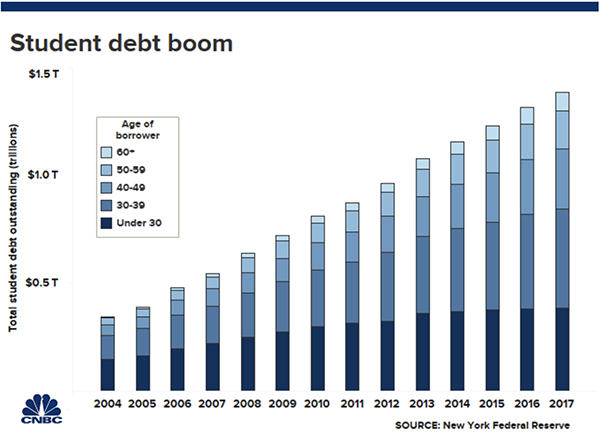Applying AI to the Student Debt Crisis
Applying Artificial Intelligence to the Student Debt Crisis
Led by ShapingEDU Innovator in Residence Nancy Rubin, Ph.D.
In this project, ShapingEDU participants will partner with data scientists, data engineers, and domain experts from around the world, using the Omdena platform, to collaborate and build an artificial intelligence solution to better understand -- and potentially recommend solutions to -- the student debt crisis.
Omdena’s Collaborative AI approach to solving problems pairs organizations to diverse teams of AI engineers. The ShapingEDU community will work together with collaborators to refine the problem statement, collect the data, and build ethical and adoptable AI solutions in a faster and more efficient manner.
Draft Problem Statement: How can we better understand student debt to inform policy makers, educators, students and other decision-makers?
The Challenge
Student debt has reached crisis proportions. In the United States, student loan borrowers owed a collective $1.6 trillion in federal and private student loan debt as of March 2019, according to the Board of Governors of the Federal Reserve System.
Sixty-five percent of the class of 2018 graduated with student debt, according to the data available from The Institute for College Access & Success, a nonprofit organization that works to improve higher education access and affordability. Among these graduates, the average student loan debt was $29,200.
Around 43 million people in the U.S. are in debt for their education. Each year, 70% of college graduates start off their lives in the red. And their average balance is around $30,000, up from $10,000 in the early 1990s.
As we enter a new decade, outstanding student debt trails only mortgages and is expected to top $2 trillion in the next couple of years. Recent stimulus bills addressing the coronavirus crisis have paused payments on loans for many borrowers. Could additional stimulus bills provide better solutions to the student debt crisis?
The Approach
Omdena’s Collaborative AI approach to solving problems pairs organizations to diverse teams of engineers. The ShapingEDU community will work together with collaborators on an eight-week project to refine the problem statement, collect the data and build ethical and adoptable AI solutions in a faster and more efficient manner.
Approximately 50 engineers and academics, working together, will use processes such as sentiment analysis to analyze social media and machine learning to review publicly available student loan datasets. The diversity in the project team prevents biased solutions and enables breakthroughs by using fast iteration cycles and constant perspective sharing.
This project is a call to ShapingEDU doers and touches upon many of the 10 Actions to Shape the Future of Learning, the guiding principles of our community.
- Innovative Artificial Intelligence Applications
- Embed Data-Drive Approaches for Student Success
- Bolster Intergenerational Leadership for Learning Futures
- Build Constellations of Innovation
Get Involved
ShapingEDU LIVE: Applying AI to the Student Debt Crisis Kick-Off Event
Ongoing Discussion
Join the ongoing conversation in Slack (#innovating-ai). Not in the ShapingEDU Slack workspace yet? Apply to join.

